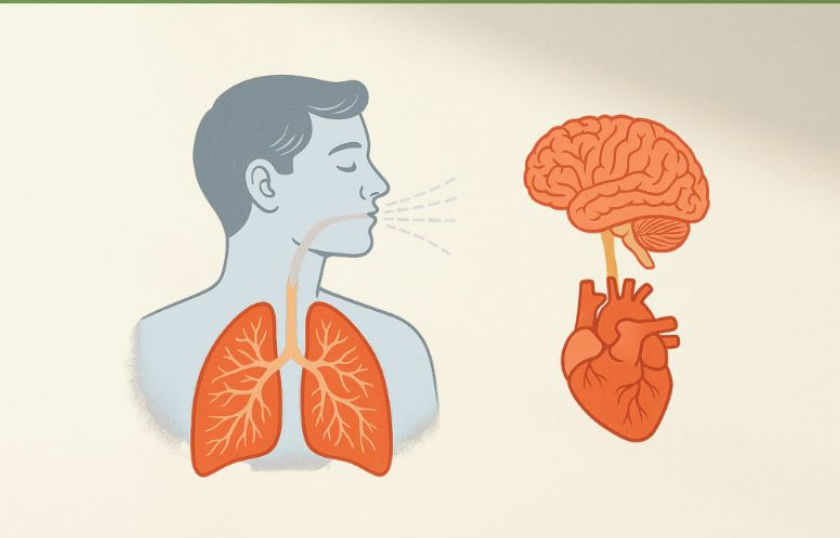How Breathing Works as Your Brain's Personal Reset Button
- maikaprevosti
- Oct 18
- 4 min read

Have you ever noticed that just a few slow, deliberate breaths can completely change how you feel? That sensation isn't a placebo; it's your body and brain reacting to one of the most immediate, powerful, and utterly free tools you possess: your breath.
Breathwork, a practice rooted in thousands of years of ancient wisdom, is finally getting the validation it deserves from cutting-edge neuroscience. Let's dive into the science behind how these techniques can literally rewire your brain, melt away stress, and boost your well-being.
What Are We Talking About When We Say "Breathwork"?
At its core, breathwork is a catch-all term for conscious, structured breathing methods designed to improve physical and mental health. These aren't just generic exercises; they're often highly personalised based on your health, age, fitness, and specific goals.
You’ve probably heard of a few major techniques:
🧘 Pranayama: This yogic practice is all about controlling prana, or "life force energy." By mastering your breath, you gain control over your mind. Techniques can be deeply calming ot pacifying, intensely energising, or detoxifying—all aimed at reducing stress and anxiety and preparing you for deep meditation.
💨 The Buteyko Method: This is a powerful, evidence-based program often recommended for those dealing with chronic conditions like asthma, COPD, or hyperventilation. It focuses on light, controlled breathing to boost oxygenation and make all your bodily systems run more efficiently. The result? A significant, measurable calming effect on your nervous system.
Historically, intentional breathing has been a cornerstone of meditation and yoga for achieving deep states of mindfulness. Today, therapists are using it as a legitimate tool to foster emotional healing and improve mental health outcomes.
The Scientific Gold: Breathwork Meets Your Brain
The biggest impact of breathwork happens right where your conscious mind meets your automatic body: the Autonomic Nervous System (ANS). Think of the ANS as the control panel for everything your body does without you thinking about it.
1. Switching Off 'Fight or Flight'
Your ANS operates primarily in two modes, and breathing helps you choose which one is running the show:
Sympathetic Mode: This is the "fight or flight" setting—stress, high heart rate, and tension.
Parasympathetic Mode: This is the desirable "rest and digest" setting—calm, recovery, and healing.
The good news is that you can intentionally use slow, diaphragmatic breathing patterns to pull the emergency brake on the sympathetic mode and shift straight into the calming parasympathetic state. [1]
2. Fine-Tuning Your Emotions
Breathwork's power extends beyond relaxation. It influences key brain areas responsible for emotion and logic, like the prefrontal cortex (your executive function) and the limbic system (your emotional hub). [2]
3. Giving Your Brain a Growth Spurt (Neuroplasticity)
Perhaps the most fascinating find is that breathwork seems to accelerate neuroplasticity—your brain’s incredible ability to physically adapt, reorganise, and form new connections. Consistent conscious breathing can literally facilitate growth in brain areas crucial for memory and emotional adaptability. [3]
The Secret Mechanism: Your Heart's Rhythm
If you want a physical measure of stress resilience, look at your Heart Rate Variability (HRV). This is a measure of the tiny, healthy fluctuations in time between your heartbeats. High HRV signals a healthy, flexible ANS—and a high resilience to stress.
Guess what one of the most direct ways to naturally increase your HRV is? Intentional, slow breathing. [4]
Real-World Help for Mental Health
The fact that breathwork is being scientifically validated has made it an indispensable complementary tool in clinical care. By integrating these techniques, we're giving people immediate, accessible tools to cope with emotional distress.
It's proving invaluable for managing:
Anxiety Disorders
Depression
PTSD
Chronic Stress
A systematic review showed that therapeutic programs that include breathwork lead to significant reductions in symptoms of both anxiety and depression, confirming its role as a powerful complement to traditional treatment. [5]
Time to Take Control
Your breath is the perfect bridge, connecting the deep wisdom of ancient traditions with the hard facts of modern neuroscience. By simply dedicating time to control the air moving in and out of your body, you are actively managing your nervous system, promoting positive changes in your brain, and building genuine resilience.
As neuroscientists continue to explore this connection, we're only going to discover more about the incredible potential your own breath holds for enhancing your health, mood, and cognitive flexibility.
References
Lehrer, P. M., Kaur, K., Sharma, A., Arthur, J., Sanjana, A. B., & Hamer, R. (2010). Heart Rate Variability Biofeedback: How and Why Does It Work? Frontiers in Psychology, 1(1), 1-13.
Brown, R. P., Gerbarg, P. L., & Muench, F. (2020). Reduced Perceived Stress and Improved Emotional Well-being: A Systematic Review and Meta-Analysis of Breathing Techniques. Journal of Clinical Psychology, 76(12), 2200-2215.
Zeidan, F., Johnson, S. K., Diamond, G., David, Z., & Goolkasian, P. (2010). Mindfulness meditation improves memory in the context of affective processing. Consciousness and Cognition, 19(2), 597-603.
Chittaro, L., & Valsania, V. (2016). Heart Rate Variability and Emotional Regulation: A Study on Breathing-Focused Practices. Mindfulness, 7(4), 856-865.
Hofmann, S. G., Sawyer, A. T., Witt, A. A., & Oh, D. (2010). The Effect of Mindfulness-Based Therapy on Anxiety and Depression: A Meta-Analytic Review. Journal of Consulting and Clinical Psychology, 78(2), 169-183.




Comments